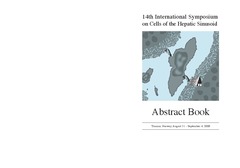Cervid herpesvirus 2 and not Moraxella bovoculi caused keratoconjunctivitis in experimentally inoculated semi-domesticated Eurasian tundra reindeer
Permanent link
https://hdl.handle.net/10037/11386Date
2017-04-24Type
Journal articleTidsskriftartikkel
Peer reviewed
Author
Tryland, Morten; Sanchez Romano, Javier; Marcin, Nina; Nymo, Ingebjørg Helena; Josefsen, Terje Domaas; Sørensen, Karen Kristine; Mørk, TorillAbstract
Background: Infectious keratoconjunctivitis (IKC) is a transmissible disease in semi-domesticated Eurasian reindeer
(Rangifer tarandus tarandus). It is regarded as multifactorial and a single causative pathogen has not yet been identified.
From clinical outbreaks we have previously identified Cervid herpesvirus 2 (CvHV2) and Moraxella bovoculi as
candidates for experimental investigations. Eighteen reindeer were inoculated in the right eye with CvHV2 (n = 5), M.
bovoculi (n = 5), CvHV2 and M. bovoculi (n = 5) or sterile saline water (n = 3; controls).
Results: All animals inoculated with CvHv2, alone or in combination with M. bovoculi, showed raised body temperature, increased lacrimation, conjunctivitis, excretion of pus and periorbital oedema; clinical signs that increased in severity from day 2 post inoculation (p.i.) and throughout the experiment, until euthanasia 5–7 days p.i. Examination after euthanasia revealed corneal oedema, and three animals displayed a corneal ulcer. CvHV2 could be identified in swab samples from both the inoculated eye and the control eye from most animals and time points, indicating a viral spread from the inoculation site.
Conclusions: This study showed that CvHV2 alone and in combination with M. bovoculi was able to cause the characteristic clinical signs of IKC in reindeer, whereas inoculation of M. bovoculi alone, originally isolated from a reindeer with IKC, did not produce clinical signs. Previous studies have suggested that herding procedures, animal stress and subsequent reactivation of latent CvHV2 infection in older animals is a plausible mechanism for IKC outbreaks among reindeer calves and young animals in reindeer herds. However, further studies are needed to fully understand the infection biology and epidemiology associated with IKC in reindeer. Keywords: Alphaherpesvirus, Eye disease, IKC, Moraxella, Ophthalmology, Reindeer, Wildlife
Results: All animals inoculated with CvHv2, alone or in combination with M. bovoculi, showed raised body temperature, increased lacrimation, conjunctivitis, excretion of pus and periorbital oedema; clinical signs that increased in severity from day 2 post inoculation (p.i.) and throughout the experiment, until euthanasia 5–7 days p.i. Examination after euthanasia revealed corneal oedema, and three animals displayed a corneal ulcer. CvHV2 could be identified in swab samples from both the inoculated eye and the control eye from most animals and time points, indicating a viral spread from the inoculation site.
Conclusions: This study showed that CvHV2 alone and in combination with M. bovoculi was able to cause the characteristic clinical signs of IKC in reindeer, whereas inoculation of M. bovoculi alone, originally isolated from a reindeer with IKC, did not produce clinical signs. Previous studies have suggested that herding procedures, animal stress and subsequent reactivation of latent CvHV2 infection in older animals is a plausible mechanism for IKC outbreaks among reindeer calves and young animals in reindeer herds. However, further studies are needed to fully understand the infection biology and epidemiology associated with IKC in reindeer. Keywords: Alphaherpesvirus, Eye disease, IKC, Moraxella, Ophthalmology, Reindeer, Wildlife
Description
Publisher
BioMed CentralCitation
Tryland M, Sanchez Romano J, Marcin N, Nymo IH, Josefsen TD, Sørensen KK, Mørk T. Cervid herpesvirus 2 and not Moraxella bovoculi caused keratoconjunctivitis in experimentally inoculated semi-domesticated Eurasian tundra reindeer. Acta Veterinaria Scandinavica. 2017;59Metadata
Show full item recordCollections
Related items
Showing items related by title, author, creator and subject.
-
Influence of environmental tonicity changes on lipophilic drug release from liposomes
Nikolaisen, Trygg Einar (Mastergradsoppgave; Master thesis, 2018-05-15)Introduction: Liposomes as drug delivery systems has been widely studied as a way to solubilize poorly soluble drugs, reduce side effects of chemotherapeutics and increase circulation time in vivo. Since the first descriptions of liposomes over 60 years ago, they have shown tendencies to shrink and swell when the external environment of the liposomes is altered. This phenomenon has been studied in ... -
The Temporomandibular Joint in Juvenile Idiopathic Arthritis, focusing on Quality of Life, Oral Microbiome and Intervention
Frid, Paula (Doctoral thesis; Doktorgradsavhandling, 2020-10-02)The temporomandibular joint (TMJ) is commonly involved in juvenile idiopathic arthritis (JIA), and may lead to impaired mouth opening, pain and facial growth disturbances. Asymptomatic TMJ arthritis may be diagnosed late in the disease course, thus management is challenging. The overall objectives of this thesis were to provide new knowledge on quality of life (QoL), the oral microbiome and interventions ... -
14th International Symposium on Cells of the Hepatic Sinusoid
Smedsrød, Bård (Book; Bok, 2008-08-31)Abstract book of the symposium


 English
English norsk
norsk


